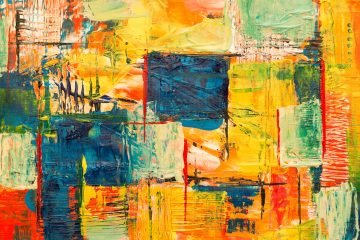In the quiet solitude of my studio, surrounded by vibrant colors and a canvas waiting to be transformed, I find myself reflecting on the enduring popularity of Madhubani paintings. As an artist deeply connected to this ancient art form, I am fascinated by the reasons behind its timeless allure.
Madhubani paintings hold within them a rich cultural heritage that stretches back through the corridors of time. They are more than just paintings; they are a visual manifestation of our history, our mythology, and our rituals. With each brushstroke, we tell stories of gods and goddesses, of nature’s beauty, and of the daily life that surrounds us. These paintings are a celebration of our identity, a cherished part of our cultural tapestry that continues to captivate hearts across generations.
What makes Madhubani paintings truly special is their unique style and technique. The bold and vibrant colors dance across the canvas, invoking a sense of joy and vitality. The intricate patterns, meticulously crafted with the natural dyes and pigments sourced from the very earth we walk upon, speak to our deep connection with nature. The twigs, brushes, and fingers that we use to apply these colors become extensions of our creative spirits, breathing life into each stroke. It is this distinctive style that makes Madhubani paintings instantly recognizable and draws people into their mesmerizing world.
Preservation and promotion have been vital in keeping the flame of Madhubani art burning brightly. Organizations, governments, and art enthusiasts have come together to safeguard this ancient tradition. Workshops, exhibitions, and educational programs have been established to ensure that the traditional techniques are passed down to the next generation. The support from the art community and collectors has been instrumental in nurturing and popularizing this art form. The world is beginning to see what we have always known—the profound beauty and cultural significance of Madhubani paintings.
What excites me as an artist is the versatility of Madhubani paintings. They have transcended the boundaries of traditional art and found their place in contemporary applications. Our paintings adorn textiles, pottery, and home decor items, bringing a touch of our artistic heritage into everyday life. Even fashion accessories proudly showcase our intricate patterns and vibrant colors. The fusion of tradition and modern aesthetics allows Madhubani paintings to remain relevant and appreciated in today’s world, a bridge between the past and the present.
And beyond our borders, Madhubani paintings have journeyed, embraced by art enthusiasts worldwide. Exhibitions and showcases in international galleries and museums have introduced this ancient art form to diverse audiences. It is awe-inspiring to witness people from different cultures and backgrounds drawn to our paintings, connecting with the stories we tell and finding their own meaning within our vibrant strokes. The global appreciation of Madhubani paintings continues to fuel our creative spirits, inspiring us to create more, to share more of our artistic heritage with the world.
As I stand before my canvas, brush in hand, I am reminded of the enduring power of Madhubani paintings. They are not simply strokes of color on a surface; they are the embodiment of our collective history, our artistic expression, and our cultural pride. Through them, we honor our ancestors, celebrate our identity, and create a lasting legacy for future generations. The popularity of Madhubani paintings remains steadfast, a testament to their timeless allure that will continue to captivate and inspire for ages to come.
Artists
Abstract Art
Abstract art is a style of visual art that emphasizes shapes, colors, lines, and forms rather than depicting recognizable objects from the natural world. It often seeks to convey emotions, sensations, or ideas through non-representational Read more…


 Protected by Patchstack
Protected by Patchstack
0 Comments